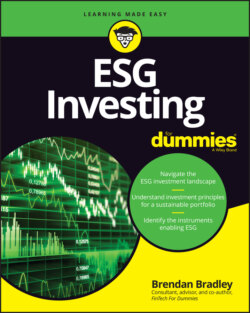Читать книгу ESG Investing For Dummies - Brendan Bradley - Страница 50
Applying artificial intelligence and data science to ESG analysis
ОглавлениеSeveral investors mention the lack of high-quality information as the biggest challenge in adopting ESG principles. Industry bodies are developing international standards and guidance for ESG disclosure, but in the absence of standards, the burden lies with individual companies and investors to ensure quality ESG disclosures and to confirm the sustainability of vendors, suppliers, customers, and counterparties. But how do you verify it?
For most companies, ESG verification implies asking such partners to abide by the vendor code of conduct. However, artificial intelligence could play a central role in collecting, verifying, and analyzing ESG performance by using techniques from Natural Language Processing (NLP; programmatically mining information from text), graph analytics (understanding how different entities influence each other’s ESG), and Machine Learning (ML; predicting how ESG factors will influence investment performance in given conditions). Moreover, ML could be used to generate missing values for companies that have incomplete reporting by using the known rating of an established ESG company and defining the similarities between the companies and their industry sector.
It’s clear that without solving their fundamental data problem, companies won’t have an accurate understanding of their own ESG metrics (garbage in, garbage out). However, as the industry evolves toward a standardized set of metrics and reporting formats, investors will deploy AI to verify evidence of materiality, evaluate investment risk, and forecast investment return. Eventually, ML will produce automatic investment decisions integrating ESG factors, just as it does in traditional investing. Therefore, the investment professionals who understand how to leverage AI resources to contextualize and produce ESG data will be best positioned as ESG data standardizes.
